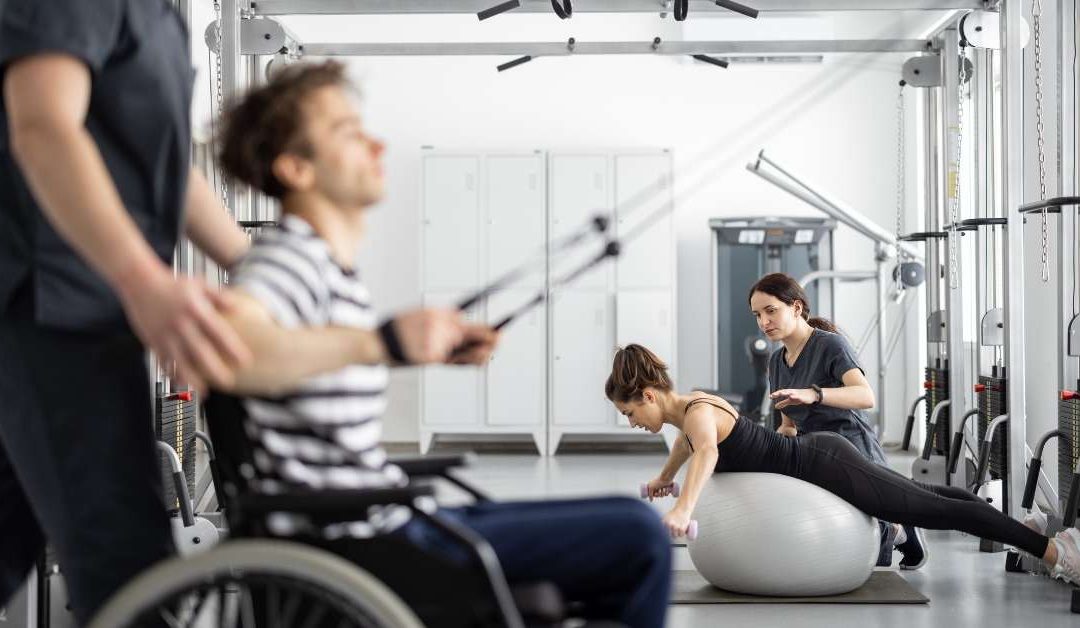Physical therapy for gym injuries can be the fastest way to recover and get back to training, especially when a heavy lift goes wrong, a treadmill slip twists your ankle, or an overhead press leaves your shoulder throbbing.
One moment you’re chasing a personal best, the next you’re wondering if you’ll even make it through your next workout.
Stick around, and we’ll walk through what really helps you bounce back without losing your place in the gym.
KEY POINTS
- Physical therapy for gym injuries speeds up recovery by reducing pain, restoring mobility, and helping you safely return to your workouts without setbacks.
- Targeted rehab not only treats current injuries but also prevents future ones through strength training, mobility work, and improved exercise technique.
Why Gym Injuries Happen More Often?
Some people think of the gym as a safe, controlled environment. But heavy weights, repetitive movements, and even poor posture during simple exercises can set you up for trouble.
According to Johns Hopkins Medicine, the common culprits of gym injuries include lifting more than your body can handle, rushing through reps with bad form, skipping warm-ups, or not giving your body enough rest between sessions.
Even experienced lifters get hurt. A sudden twist, a slip on a sweaty floor, or pushing through pain “just to finish the set” can turn a small strain into a bigger problem.
The Most Common Gym Injuries
Physical therapists often see patterns in the types of injuries that show up from gym workouts. Knowing the most common ones can help you spot trouble early and get help before things get worse.
1. Sprained Ankles and Ankle Pain
Quick changes in direction during HIIT workouts, box jumps, or agility drills can lead to a rolled ankle. This can stretch or tear the ligaments, leaving you with swelling, tenderness, and instability.
Physical therapy focuses on reducing inflammation, restoring range of motion, and rebuilding strength so the ankle can handle movement again without giving out.
If you’ve been dealing with ankle pain, therapy can also address balance and coordination, so future workouts feel more secure.
2. ACL Tears
While more common in sports, ACL injuries can also happen in the gym, especially during explosive movements, jumping, or heavy squatting with poor knee alignment.
An ACL tear can sideline you for months if not treated properly.
Physical therapists create a progressive plan to restore stability, rebuild quadriceps and hamstring strength, and retrain movement patterns to protect the knee from future damage.
In post-surgical cases, therapy is essential for regaining full mobility and a safe return to training.
3. Shoulder Dislocations and Strains
The shoulder joint is mobile but not very stable, which makes it prone to injury in bench pressing, overhead lifting, or pull-up variations. A shoulder dislocation often needs careful rehab to restore strength and prevent recurrent instability.
Physical therapy works on rotator cuff strength, joint mobility, and correct lifting mechanics so you can return to upper body training without constant fear of re-injury.
4. Lower Back Strain
Deadlifts, squats, and even core exercises can trigger back pain if form breaks down or the load is too heavy. Sometimes, underlying mobility or stability issues are the real cause.
Therapy for back pain relief looks beyond the pain itself, addressing hip mobility, core endurance, and spinal mechanics.
The goal is to help you lift, twist, and move with less strain on the lower back.
5. General Sports Injuries
From mild muscle pulls to overuse tendon pain, many people deal with nagging issues that don’t go away on their own.
Sports injury relief in Southside Jacksonville through physical therapy can shorten downtime, speed healing, and give you a plan for safe progression.
Therapists use a mix of manual therapy, exercise, and education to help you train smarter and reduce the risk of recurring problems.
How Physical Therapy Helps You Recover Faster
A gym injury means that you have to understand why it happened in the first place. Physical therapists start with a detailed evaluation, looking at strength, mobility, balance, and how you move during exercises.
From there, they create a personalized plan that often includes:
- Targeted exercises to strengthen weak muscles and support injured areas
- Mobility work to restore full joint movement
- Neuromuscular training to improve coordination and control
- Education on safe form and load management for your workouts
This approach not only gets you back to the gym faster but also lowers your risk of repeating the same injury.
Get Back to the Gym Safely
The goal after any injury is to return to activity feeling confident and capable.
Rushing the process or skipping proper rehab often leads to compensations that can trigger new issues.
If you’ve been sidelined by a workout injury or want to stay ahead of potential problems, Motion RX offers Physical Therapy in Jacksonville & Clearwater FL, with experienced therapists who understand the demands of training.
FAQs
How soon should I start physical therapy after an injury?
The sooner you start, the better. Early treatment can reduce swelling, prevent stiffness, and speed up recovery.
Can physical therapy help prevent future gym injuries?
Yes. A therapist can identify weaknesses, improve mobility, and teach you safe training techniques.
How long does recovery take with physical therapy?
It depends on the injury and your consistency with the program. Some heal in weeks; others take months.



